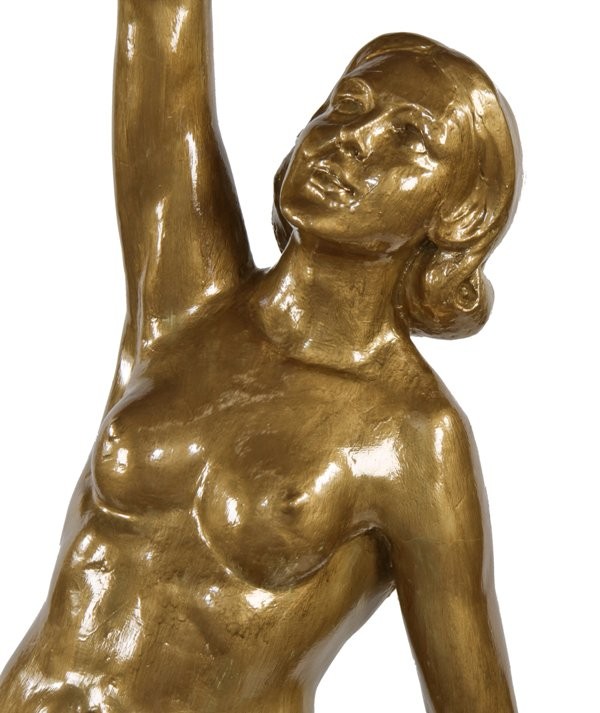
c. 1930’s full-figured cast plaster nude “flapper girl” interior southtown theater auditorium alcove cast plaster statue – rapp & rapp, architects
51-17827-13
Category
Chicago TheatresAbout This Item
well-documented c. 1931 american depression era interior southtown theater or movie palace auditorium alcove full-figured “flapper girl” statue attributed to the illustrious chicago-based decorators’ supply company. the finely crafted life-size nude female statue is comprised of cast plaster and reinforced with horse hair – a popular binding agent used during this period in time. the female’s striking upright pose consists of an outstretched arm, headed tilted upward, standing on a single leg and the left hand grasping a clam shell. the original square-shaped base or stand is intact and structurally sound. the statue contains a uniform metallic gold enameled finish. likely removed shortly before demolition. the depression era the spanish-style southtown theater was designed and built for balaban and katz in 1931 by the prominent architectural firm of rapp and rapp. located on the south side of chicago (i.e., englewoood neighborhood), the southtown was one of the last major movie palaces ever to be built in chicago. the stucco-covered theater’s most distinguishing exterior feature was the massive tower, which was more than 90 feet tall and had brightly lit oversized neon letters containing the word “southtotwn” on all four sides. the cavernous auditorium contained 2200 seats on the main floor and an additional 1000 seats in the upper balcony. one of the theater’s more distinctive features was the flamingo pool and fountain located in the grand inner lobby, which contained a running waterfall and live fish. the theater also contained dioramas located on the mezzanine floor, which featured notable city of chicago historical events (e.g., the great chicago fire of 1871). the theater contained a twin box office, children’s recreational room and smoking lounges for men and women. the southtown closed in august of 1958. for several years after, the theater was the home of carr’s department store. the theater succumbed to the wrecking ball in 1991.









